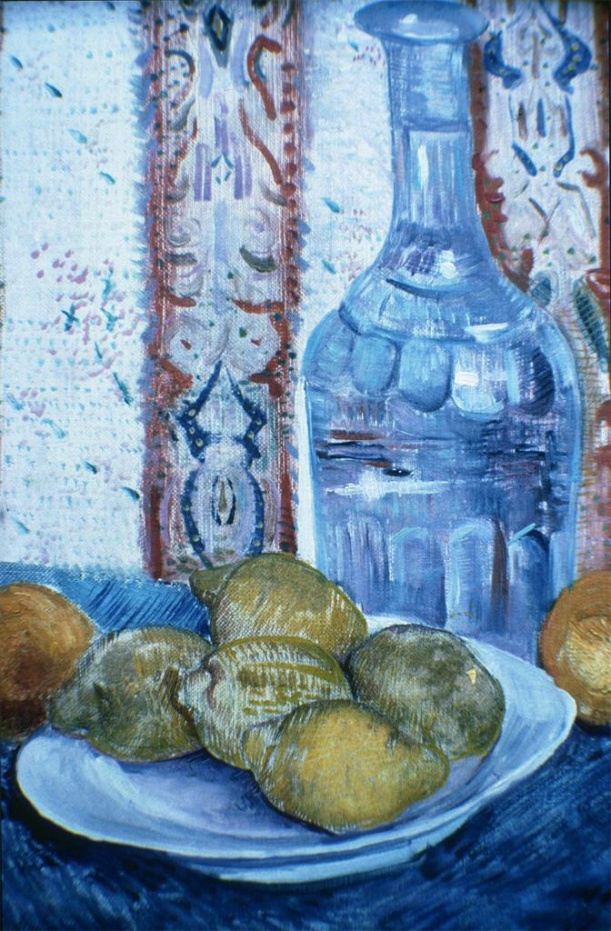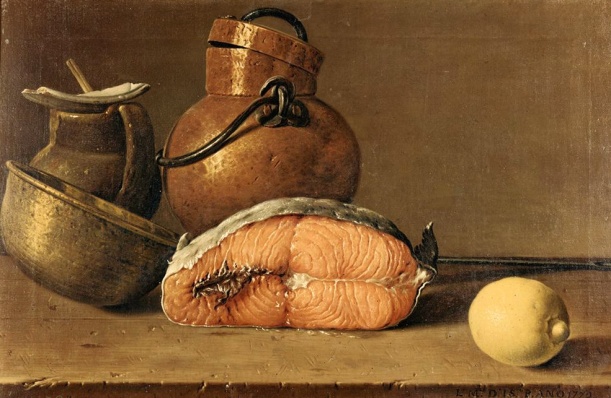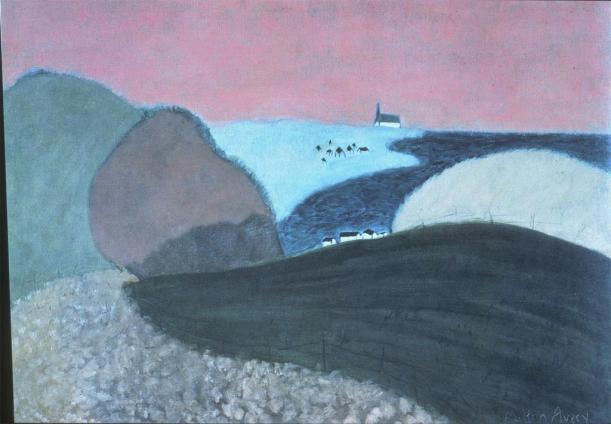Watch this video for some tips on mixing shadows with a complimentary color.
Your homework project is to paint a simple still life study (approximately 3-5 objects &/or some drapery) using either a warm or cool palette. I have also created another slide show on ArtStor, “Warm or Cool Light Still Life Paintings” which you may review for inspiration. The examples in the slideshow are not all quite as clear as the examples below, but they all move towards being either warm or cool overall.
This example uses a distinctly cool temperature of light, creating a bluish cast across the entire painting (even the yellow lemons have a lot of blue in them):
And an example with a distinctly warm palette:
As you work on your painting it will be helpful to think about the warm glow of the sun in the late afternoon, or alternately, the cooler light of dusk or the early morning. You may also want to do a composition similar (or even the same) to the still life that you set up for your reductive value study homework back in project 4. Make sure you don’t overly complicate your composition–the examples above only have a few objects and they are highly successful partially because of the simplicity of the arrangements. This project is a single-weight mark, approximately 3 hours (minimum). Always remember to work from general to specific, quickly establishing large areas of value/color before developing any details.
[materials: half sheet of double-weight vellum or similar, paints, brushes, view finder, measuring sticks and still life objects]
Objectives: achieve consistent light temperature across composition, choice of composition, accuracy of proportions/perspective



